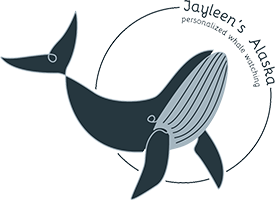Gallery
At 12 years old Jayleen bought her first amateur/professional camera. It was a Canon 40D with a 75-300mm Canon lens. After that there was no keeping her indoors. It was a favorite pastime to go out on the water in a little 16’ skiff, with her dad and take pictures of wildlife. Over the years she was lucky enough to win several local art scholarships for her photography and to slowly grow her stock of camera lenses and accessories.
In November of 2010, Jayleen was given the chance to host a local gallery from the Juneau Arts and Humanities Council. It was an amazing experience and this opportunity opened the doors to get her photography noticed on the national level.
With the support of esteemed photographers such as Mark Kelley and Flip Nicklin, The North American Nature Photography Association recognized her and Jayleen was chosen as one of ten young photographers nationwide to attend their semi-annual workshop in 2012.
All of the wildlife photos on this website were taken by Jayleen and throughout the tour she would be more than happy to offer up any tips and tricks to try and make your photography experience less stressful while on your whale watch.

On the underside of each tail there are markings that are unique to each humpback whale. Because each tail is so different the humpback whale community is able to give them names. The markings on this whale are characteristic of the whale named Spot. His official NOAA number is SEAK 1434. He is rumored to be 21 years old. Spot is one of Captain Jayleen’s favorite whales. He has been known to act silly once in a while.

Even more rare is a “breaching” humpback. A breach is characterized by the whole body of the whale being thrusted up and out of the water. It is a spectacular sight to see. But because these whales come to Juneau, Alaska to feed and to gain—not to party it is seen only (on average) once a month on tours. The fact remains, that to boost a 60,000 to 80,000 pound whale out of the water is a really big calorie burner and since the whales want to GAIN weight, it goes against their nature. With that said, marine biologists believe that when they do breach in the Alaskan waters it is in some sort of communication to other whales or to express an extreme emotion

Juneau, Alaska is one of the only places in the world where bubble net feeding can be found. Humpback whales are normally solitary whales, while in their feeding grounds around Southeast Alaska. However, when the herring and other small bait fish are in great abundance humpbacks can band together in groups of 3 to 20 to do this unique feeding behavior. Bubble net feeding is comprised of one whale (usually the alpha female) diving deep under the surface where she starts making noises and blowing bubbles. The rest of the whales in the group start swimming in a circle, surrounding the school of small bait fish, scarring them closer and closer together. Right when the small bait fish break the surface of the water all the whales come up with their mouths and scoop them up. This behavior is on average, seen on 14 random days total throughout the whole summer.

On our tours we also have the chance to see Orca or Killer Whales. Orcas are actually the worlds largest dolphins and tend to travel in pods. These fast moving creatures can have a territory of up to 300 miles and therefore don’t hang around the small passages around Juneau for very long. On average we see these Orcas once or twice a month. It is very special when we do get to see them.

Other wildlife there is a chance of seeing while on your tour includes Dall’s Porpoise. These little guys are only about 6’ long and weigh about 350 pounds. They usually travel in pods, but are sometimes hard to keep track of because they can swim at up to speeds of 55mph. We see these porpoises, on average, once or twice a week on tours.

One of our favorite stops is on the Faust Rock navigational buoy. Not only does this buoy offer up a great view of the Point Retreat Lighthouse in the distance, but usually some Stellar Sea Lions. Stellar Sea Lions are the second most common animal we see on our whale watching tours. If we aren’t able to find any on the buoy we can find them hunting for fish in the water.









